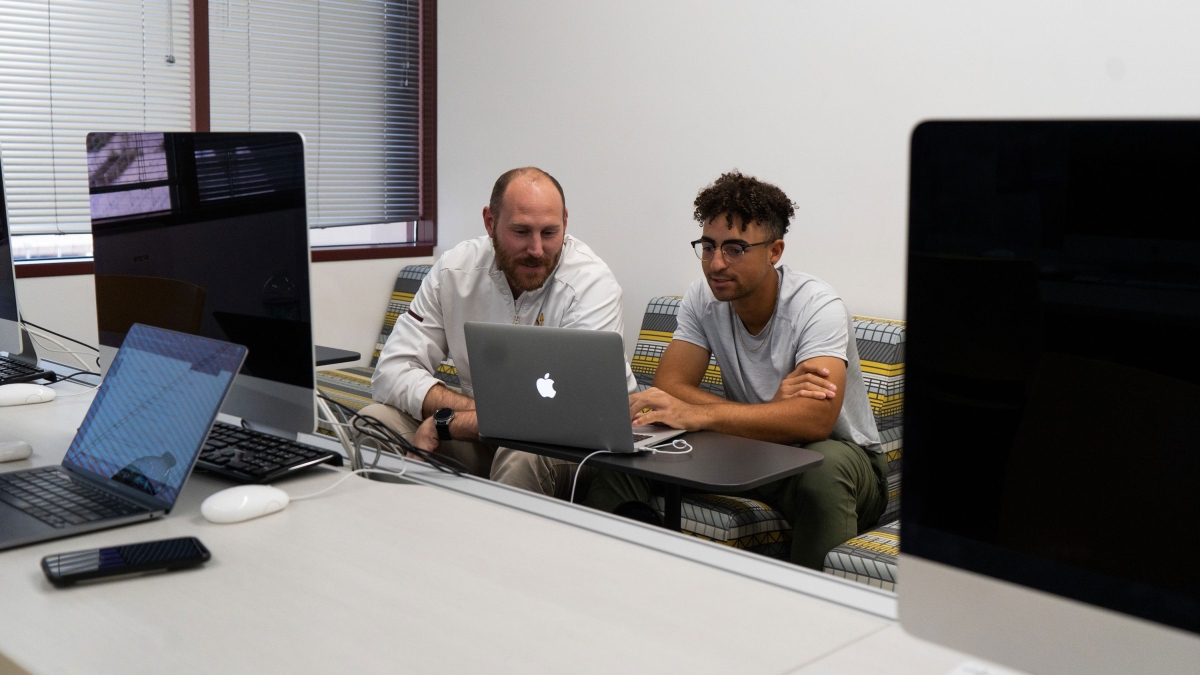Arizona State University made headlines around the country when it topped Stanford recently to secure the top spot in the Pac-12 Conference for Academic Progress Rate (APR). The score of 995 over a four-year period also was an all-time high for ASU.
For 2020–21, 17 of the 23 sports at the university earned a perfect 1,000, including 11 of the 13 women’s teams.
But why?
After years of improving results, what helped push ASU over the edge this time? One of the answers was a tool created by ASU’s University Technology Office (UTO): a data dashboard that tracks a student-athlete’s individual academic performance, from every course they are enrolled in to every assignment due within the current and prior term.
Pulling information from Canvas, ASU’s learning management system, UTO’s data and analysis team created a dashboard that visualizes and provides nearly daily updates on students’ academic performance.
The dashboard displays an individual’s Canvas activity time in a course, including the number of logins, number of clicks within a session, interactions with specific assignments and more.
It then compares these metrics, including grades, against the class average to provide academic coaches and student-athletes with a performance baseline to compare their activity.
“It was crucial for us to create a benchmark for activity that academic coaches and student-athletes could use to better understand how an individual student was progressing in their studies,” said Paul Alvarado, UTO business intelligence developer.
By getting that data almost daily, academic coaches are better positioned to provide proactive support as they work with academic mentors — tutors in skills like organization and time management — to create the best possible plan for student-athletes.
The dashboard, first used in 2019, is a far cry from when academic coaches relied only on four grade checks a semester. Those paper forms were hand-delivered to professors and took weeks to fill out and process. By then, a student’s status may have improved or worsened. The dashboard gives an accurate picture of the student’s situation yesterday or two days ago.
The Office of Student-Athlete Development then uses an in-house sorting process to evaluate students’ academic progress. By coding athletes’ academic performance in different categories such as GPA, first-generation college student, test score averages and more, the academic coaches can assign red, yellow or green status to the student-athletes — this initial assessment is used to design individualized academic support plans.
“Our aspiration has always been to build a comprehensive approach that balances and nurtures ASU student success in the classroom and in competition,” ASU President Michael M. Crow said. “This historic APR reflects our unwavering commitment to that vision, and the tremendous dedication and talent of our student-athletes, faculty and staff whose work made it possible.”
The significance of a high APR indicates an attention to student-athletes’ academic and sporting pursuits that takes into account their busy schedules.
“We’re trying to make sure everything’s in place to be successful in their studies and their sport,” said Courtney Skipper, assistant athletic director in the Office of Student-Athlete Development.
Top photo: Academic coach Jon Erwin (left) works with Cam Magee, a freshman who plays shortstop on the ASU baseball team. The Office of Student-Athlete Development provides both tutors and mentors to student-athletes for comprehensive academic support. Mentors work like tutors, but rather than focusing on class-specific content, they facilitate growth in personal development. Photo by Sun Devil Athletics
More Science and technology

New AI for a new era of discovery
As the legend goes, in 1665, Sir Isaac Newton sat in his garden at Woolsthorpe Manor in England and looked on as a lone apple dropped from a tree branch, falling straight down. This chance encounter…

ASU receives 3 awards for research critical to national security
Three researchers in the Ira A. Fulton Schools of Engineering at Arizona State University have received grant awards under the Defense Established Program to Stimulate Competitive Research, or…

Celebrating 34 years of space discovery with NASA
This year, NASA's Hubble Space Telescope (HST) is celebrating its 34th anniversary of the world's first space-based optical telescope, which paved the scientific pathway for NASA's James Webb Space…
